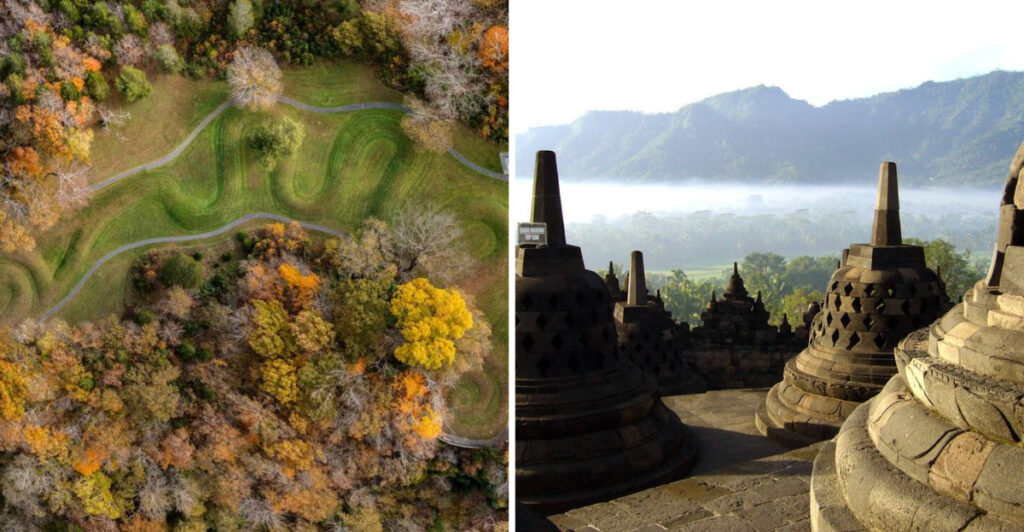Join me on a captivating journey through time as I unveil my research on 29 extraordinary prehistoric sites. Each site offers a unique glimpse into our ancient past, revealing stories of early human ingenuity, survival, and culture. From the enigmatic Stonehenge to the majestic pyramids of Giza, these sites have withstood the test of time. As I explored each location, I discovered not only architectural marvels but also the rich tapestries of life that once thrived there. Allow me to share with you the awe-inspiring truths I uncovered during my two-year exploration.
Stonehenge, England
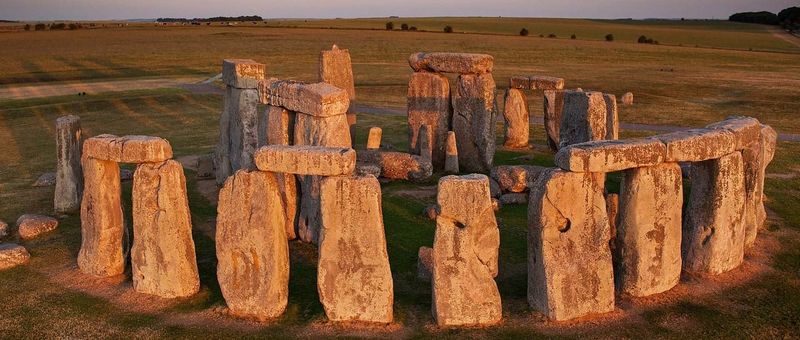
Stonehenge stands as a testament to the ingenuity of its creators. This prehistoric monument, set against the pastoral landscape of Wiltshire, England, has baffled archaeologists for centuries. Its massive stones, some weighing up to 25 tons, were transported over vast distances without modern machinery. How did they achieve this feat? Theories abound, from celestial observatories to religious ceremonies.
Despite the mysteries, one thing is certain: Stonehenge is more than a pile of rocks. It’s a window into the spiritual and social lives of an ancient people. A visit here is a step back in time.
Lascaux Caves, France
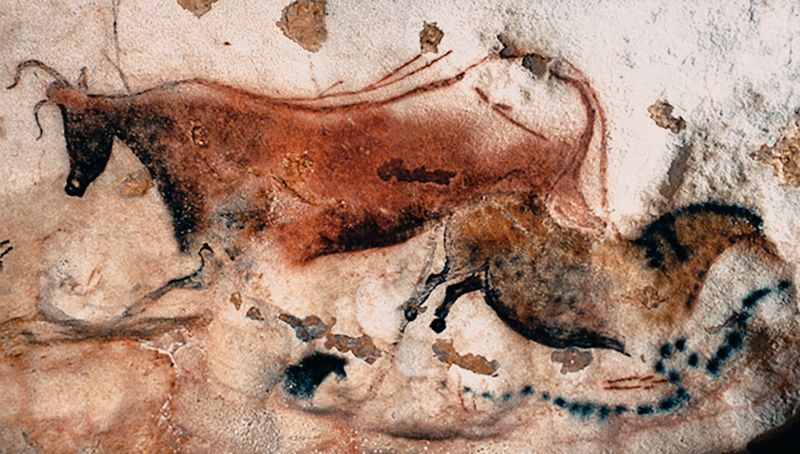
Deep within the Dordogne region of France lies the Lascaux Caves, home to some of the world’s most exquisite prehistoric art. These paintings, dating back approximately 17,000 years, depict a vibrant tapestry of animals, showcasing the artistic prowess of early humans.
Each brushstroke offers insight into the lives and beliefs of our ancestors. Was this a spiritual expression or an ancient form of communication? Standing in the dimly lit chambers, one is transported to an era where art was intertwined with daily existence.
Lascaux is not merely a cave; it’s a masterpiece of human creativity.
Çatalhöyük, Turkey
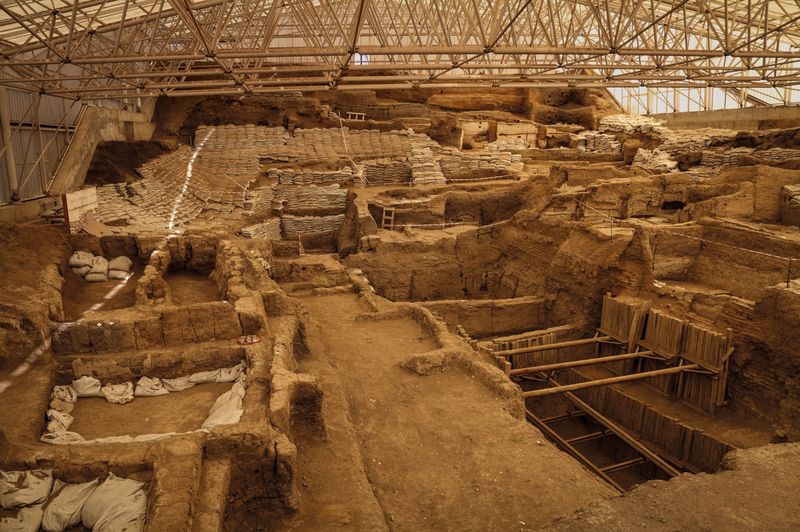
Çatalhöyük, nestled in the Konya Plain of Turkey, is one of the oldest and largest Neolithic settlements discovered. Its complex architecture, featuring interconnected homes without streets, paints a picture of communal living. Excavations have unearthed artifacts that provide glimpses into the daily lives of its inhabitants.
From intricate wall paintings to religious figurines, Çatalhöyük challenges our understanding of early urban life. Its advanced society, flourished around 9,000 years ago, raises questions about social organization and cultural practices.
As you wander through the ruins, the echoes of ancient civilization murmur their secrets.
Giza Pyramids, Egypt
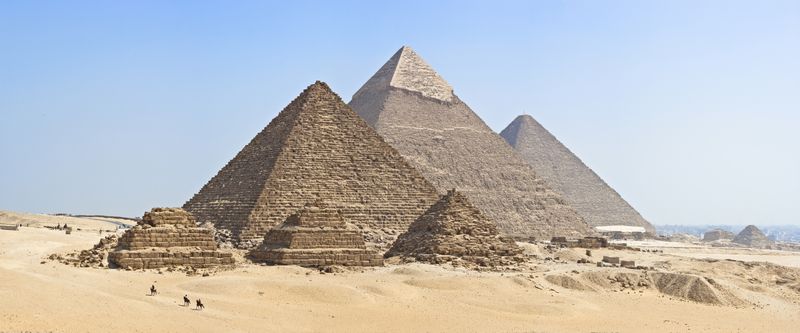
The Giza Pyramids, standing proudly on the outskirts of Cairo, are a marvel of ancient engineering. These colossal structures, built over 4,500 years ago, have survived the sands of time, leaving modern architects in awe.
The Great Pyramid, in particular, baffles experts with its precise alignment to the cardinal points and its massive limestone blocks. Was it a tomb, an observatory, or something more mystical? Each theory enhances the enigma of this wonder.
Visiting the pyramids is like stepping into the pages of history, where the voice of Pharaohs still echoes.
Machu Picchu, Peru
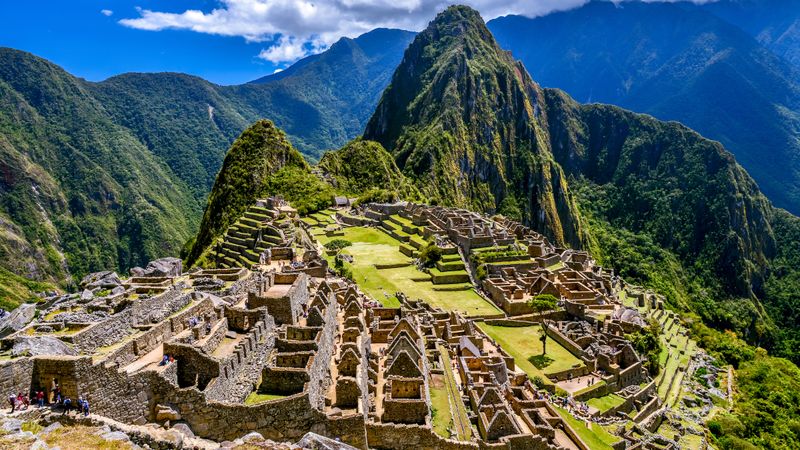
Perched high in the Andes Mountains, Machu Picchu is a testament to the Incan Empire’s architectural brilliance. Discovered in 1911, this ancient city was once a thriving hub for its residents, with temples, terraces, and a sophisticated water management system.
The panoramic views of surrounding peaks add to its mystique, drawing visitors to unravel its secrets. Was it a royal estate, a religious site, or a defensive outpost? Each stone has a story to tell.
Exploring Machu Picchu is not just a journey through ruins; it’s an immersion into a civilization’s legacy.
Göbekli Tepe, Turkey
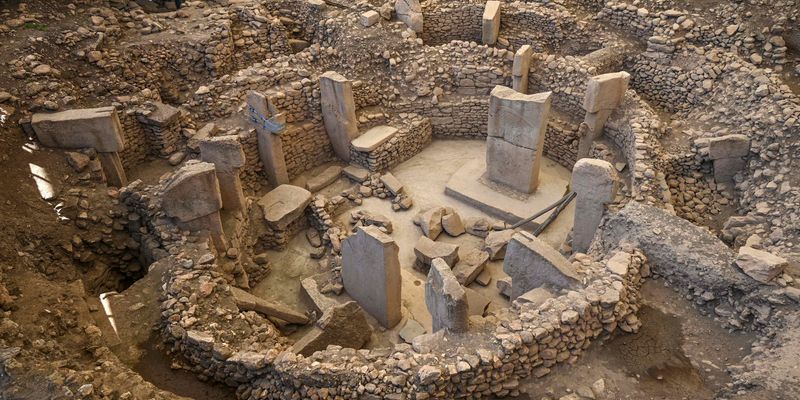
Göbekli Tepe, located in southeastern Turkey, is reshaping our understanding of prehistoric societies. Dating back over 11,000 years, this site predates Stonehenge and the pyramids, challenging conventional timelines.
The T-shaped limestone pillars, adorned with intricate carvings of animals and abstract symbols, suggest a ceremonial purpose. But why was it built? Is it the world’s oldest temple?
The mysteries of Göbekli Tepe whisper through the winds, inviting scholars and adventurers alike to delve deeper into our past. Its discovery is not merely historical; it’s a revelation.
Terracotta Army, China
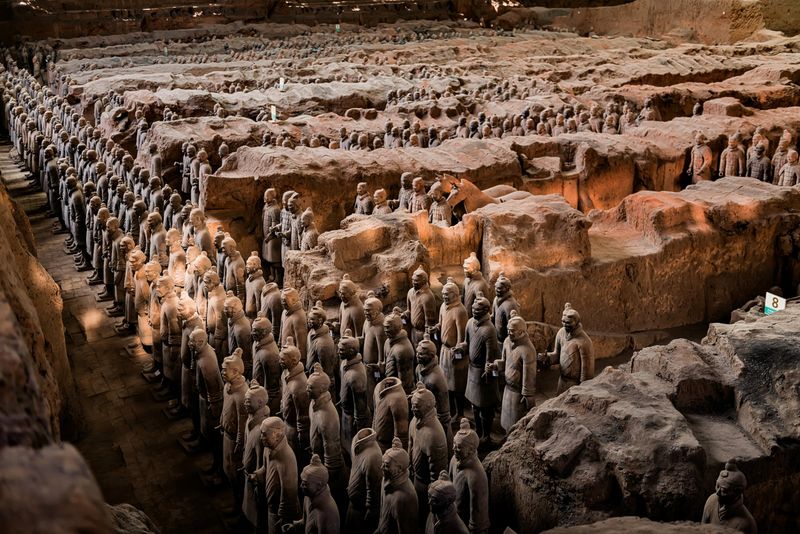
The Terracotta Army, unearthed in Xi’an, China, is a spectacle of ancient artistry and military might. This vast collection of life-sized clay soldiers, horses, and chariots was crafted to accompany China’s first emperor, Qin Shi Huang, into the afterlife.
Each figure, uniquely detailed, reflects the emperor’s power and the era’s craftsmanship. How did they achieve such lifelike precision?
Walking among the ranks of silent warriors, one feels the presence of a formidable empire. The Terracotta Army is not just an archaeological wonder; it’s a testament to China’s rich history and ambition.
Easter Island, Chile

Easter Island, or Rapa Nui, is home to the iconic Moai statues, mysterious stone figures that dot the island’s landscape. Carved by the Rapa Nui people between 1400 and 1650 AD, these statues remain shrouded in enigma.
What drove the creation of these colossal heads, and what do they signify? Were they tributes to ancestors or deities?
The silent sentinels of Easter Island stand as a testament to human creativity and cultural expression. They invite us to ponder the complexities of ancient societies, whispering stories of a bygone era.
Petra, Jordan
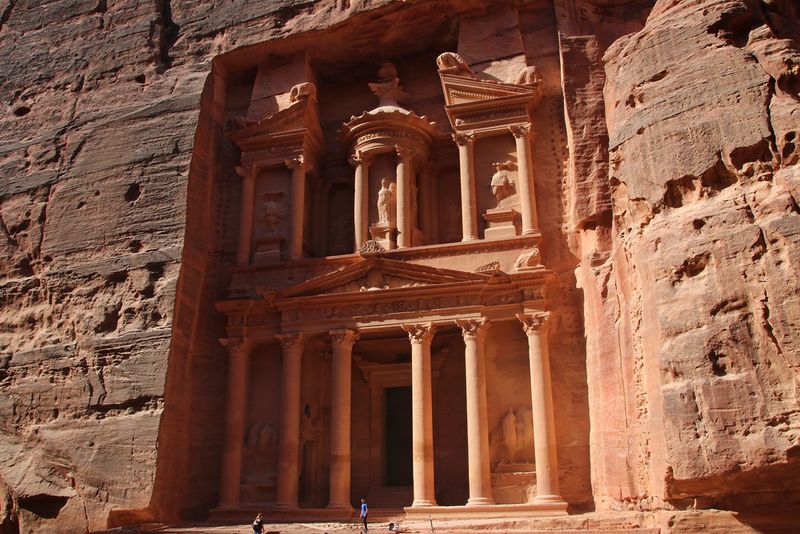
Hidden within the rugged landscapes of Jordan lies Petra, an archaeological gem. Once a thriving trading hub, Petra is renowned for its rock-cut architecture and water conduit system. The city’s most famous structure, Al-Khazneh (The Treasury), is a breathtaking marvel carved into rose-red cliffs.
How did the Nabataeans achieve such architectural feats over 2,000 years ago? The blend of Hellenistic and native influences is evident in each chiseled detail.
As you wander through the narrow Siq, the city reveals itself like a secret, inviting you to explore its storied past and culture.
Skara Brae, Scotland
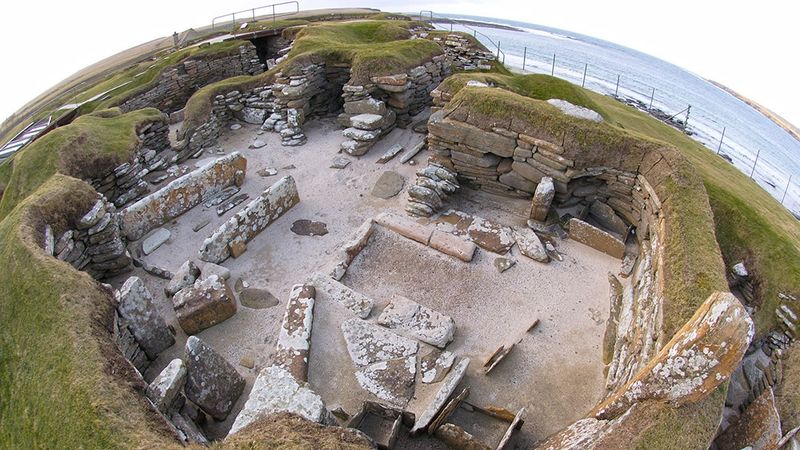
Skara Brae, nestled on the windswept Orkney Islands, offers a glimpse into Neolithic life. This remarkable settlement, preserved beneath sand dunes until its discovery in 1850, is often called the “Scottish Pompeii.”
Its stone-built houses, complete with furniture and tools, reveal a sophisticated society that thrived over 5,000 years ago. What stories do the surviving remnants of hearths and beds whisper?
Skara Brae is not just an archaeological site; it’s a vivid portrait of early human ingenuity and adaptation in the face of harsh climates.
Chichén Itzá, Mexico
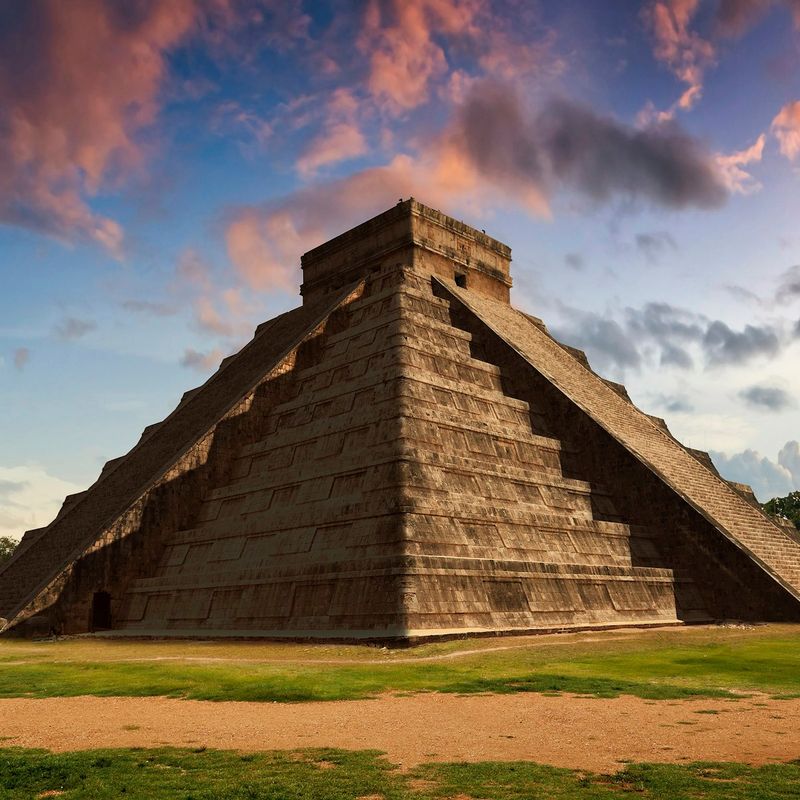
Chichén Itzá, a testament to Mayan civilization’s grandeur, stands in the Yucatán Peninsula of Mexico. Its iconic pyramid, El Castillo, dominates the site, serving both as a temple to the god Kukulcán and a calendar with its 365 steps.
The city’s astronomical alignments and sophisticated architecture showcase the Mayans’ advanced understanding of mathematics and astronomy. What rituals took place within these sacred grounds?
Visiting Chichén Itzá is like stepping into a realm where science and spirituality coexisted, offering a window into the Mayan world.
Pompeii, Italy
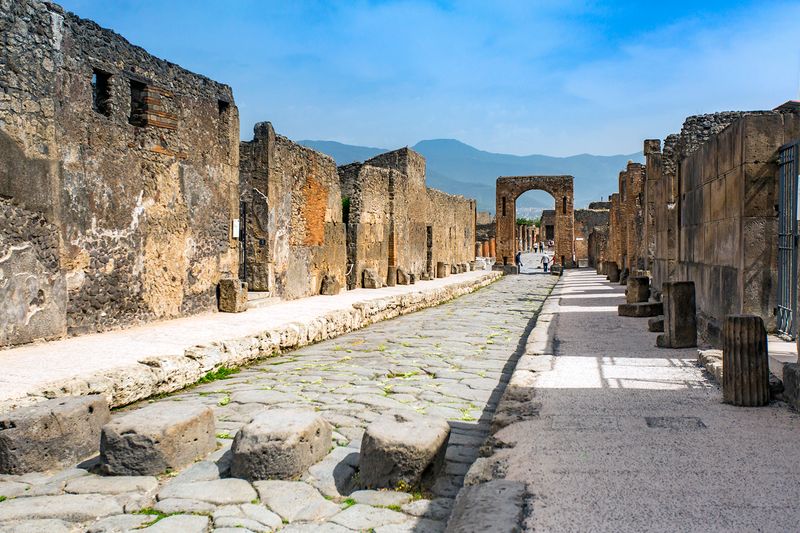
Pompeii, a city frozen in time by the catastrophic eruption of Mount Vesuvius in 79 AD, offers a poignant glimpse into Roman life. The volcanic ash preserved homes, frescoes, and even the remains of its inhabitants, creating a haunting tableau of a day interrupted.
Exploring Pompeii’s streets, one can almost hear the echoes of Roman voices. Its public baths, amphitheaters, and villas tell stories of daily life, luxury, and sudden tragedy.
Pompeii is a reminder of nature’s power and humanity’s resilience, a city where history is palpable.
Altamira Cave, Spain

The Altamira Cave, nestled in the hills of northern Spain, is a treasure trove of Paleolithic art. Its vivid depictions of bison, horses, and handprints, dating back over 20,000 years, are a testament to early human creativity.
The cave’s intricate paintings, once dubbed the “Sistine Chapel of Prehistory,” offer insights into the symbolic world of our ancestors. What stories did these ancient artists wish to tell?
Altamira is more than a cave; it’s a canvas that bridges the past and present, inviting us to admire and ponder our origins.
Serpent Mound, USA

Serpent Mound, an ancient earthwork in Ohio, USA, coils gracefully across the landscape. This prehistoric effigy mound, stretching over 1,300 feet, depicts a serpent with an undulating body and coiled tail.
Constructed by Native American cultures, its purpose and symbolism remain a mystery. Was it an astronomical marker, a ceremonial site, or something else entirely?
The serpent’s presence is both majestic and enigmatic, inviting visitors to contemplate the ingenuity and spiritual lives of its creators. It’s a landscape where history and mystery intertwine.
Göbekli Tepe, Turkey
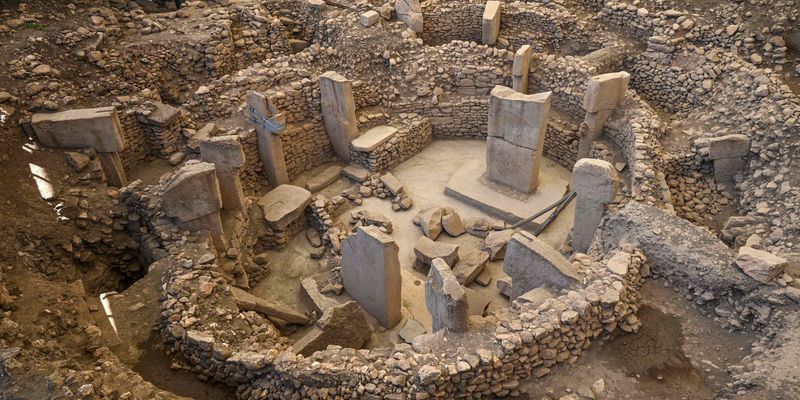
Göbekli Tepe, located in southeastern Turkey, is reshaping our understanding of prehistoric societies. Dating back over 11,000 years, this site predates Stonehenge and the pyramids, challenging conventional timelines.
The T-shaped limestone pillars, adorned with intricate carvings of animals and abstract symbols, suggest a ceremonial purpose. But why was it built? Is it the world’s oldest temple?
The mysteries of Göbekli Tepe whisper through the winds, inviting scholars and adventurers alike to delve deeper into our past. Its discovery is not merely historical; it’s a revelation.
Nazca Lines, Peru

The Nazca Lines, etched into the arid plains of southern Peru, are one of archaeology’s great enigmas. These enormous geoglyphs, depicting animals, humans, and geometric shapes, are best viewed from the air.
But who created them, and why? Were they messages to the gods, astronomical markers, or something more esoteric?
The Nazca Lines invite us to ponder ancient knowledge and artistry, stretching our understanding of human history. Their mysterious allure continues to captivate explorers and scholars alike, drawing us into a world of wonder and speculation.
Cueva de las Manos, Argentina
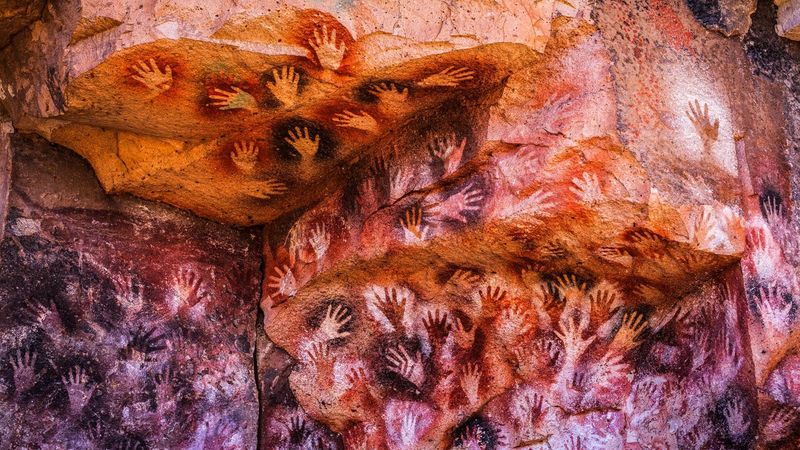
The vibrant handprints of Cueva de las Manos in Argentina speak volumes about prehistoric expression. These colorful stencils, created over 9,000 years ago, adorn the walls of a remote canyon, offering a glimpse into the lives of early hunter-gatherers.
What motivated these artists to leave their mark? Were these hands a ritualistic expression or a simple declaration of existence?
Cueva de las Manos is more than an art gallery; it’s a dialogue across millennia, where each handprint whispers tales of human connection and continuity.
Carnac Stones, France

The Carnac Stones in Brittany, France, form one of the world’s largest collections of standing stones. These megaliths, arranged in rows stretching over four kilometers, date back to the Neolithic period.
What purpose did they serve? Were they ritualistic sites, observatories, or markers of territory?
Wandering among the stones, one senses the ancient rhythms of life. The Carnac Stones are not just a historical curiosity; they are a testament to human endeavor and the mysteries we seek to unravel.
Baalbek, Lebanon
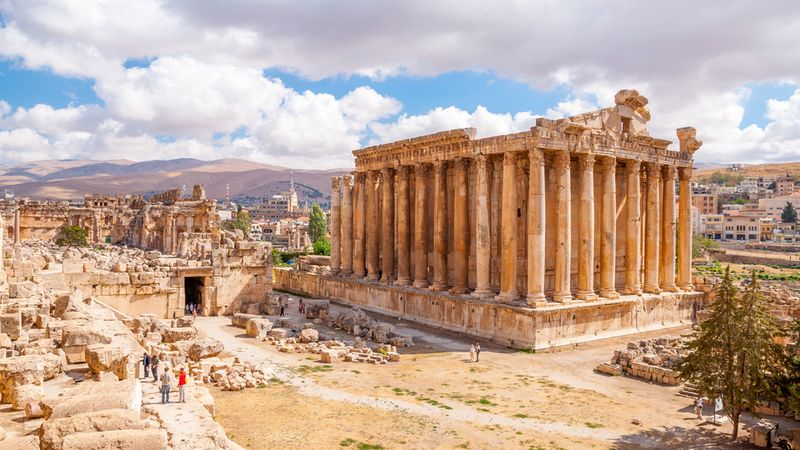
Baalbek, located in modern-day Lebanon, boasts some of the most impressive Roman ruins in the world. The massive temple complex, dedicated to Jupiter, features colossal stone blocks weighing hundreds of tons.
How did ancient builders manage such feats of engineering? The site’s grandeur and scale provoke awe and admiration. What ceremonies took place under the shadow of these towering columns?
Baalbek is a marvel of ancient architecture, a place where history’s echoes resonate amidst the ruins.
Knossos, Greece
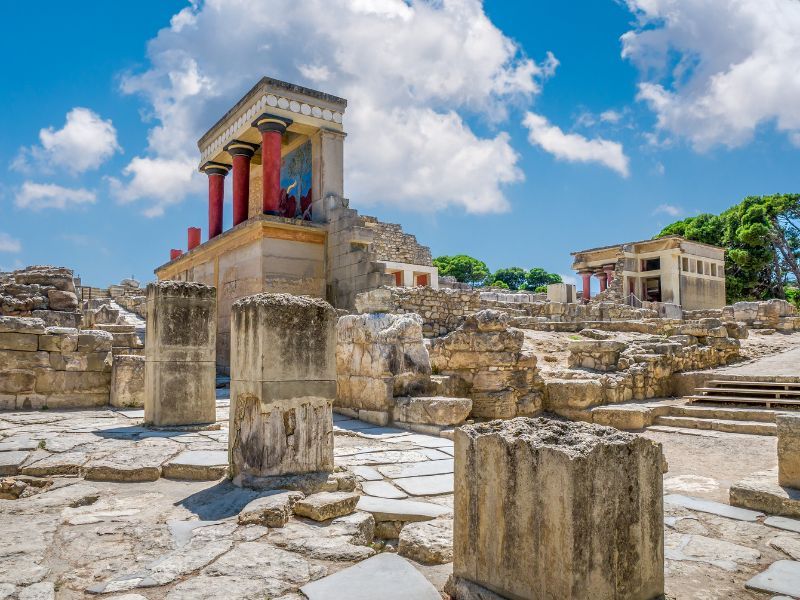
Knossos, the center of the Minoan civilization on Crete, is a labyrinthine palace complex rich in history and myth. The legendary home of King Minos and the Minotaur, Knossos was an epicenter of culture and power.
Its frescoes and artifacts reveal a society steeped in tradition and innovation. What stories do these painted walls tell of a civilization that flourished over 3,000 years ago?
Exploring Knossos is a journey into the heart of ancient Greece, where legend and history intertwine, inviting discovery and wonder.
Palenque, Mexico

Palenque, nestled in the lush jungles of Chiapas, Mexico, is a crown jewel of Mayan civilization. This ancient city, with its temples and palaces, showcases the architectural and artistic genius of the Maya.
The Temple of the Inscriptions, housing the tomb of King Pakal, stands as a testament to Mayan beliefs and ingenuity. What secrets lie within its hieroglyphs?
Palenque is not just an archaeological site; it’s a bridge to an ancient world, inviting exploration and reverence of Mayan heritage.
Stonehenge, England
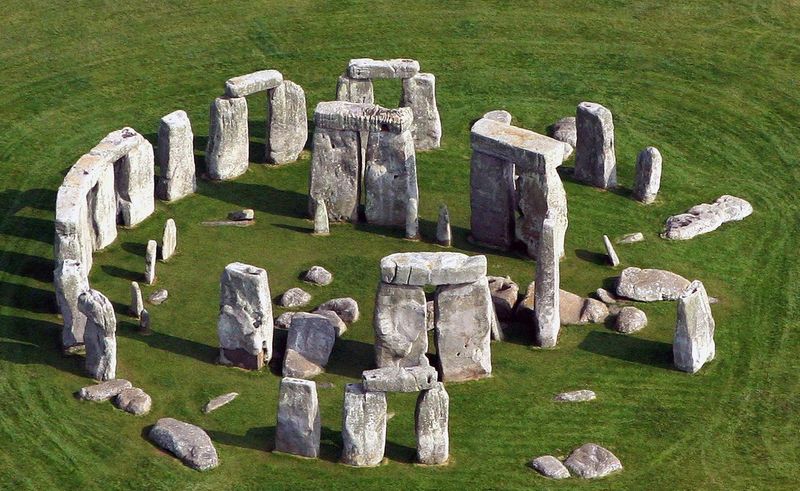
Stonehenge stands as a testament to the ingenuity of its creators. This prehistoric monument, set against the pastoral landscape of Wiltshire, England, has baffled archaeologists for centuries. Its massive stones, some weighing up to 25 tons, were transported over vast distances without modern machinery. How did they achieve this feat? Theories abound, from celestial observatories to religious ceremonies.
Despite the mysteries, one thing is certain: Stonehenge is more than a pile of rocks. It’s a window into the spiritual and social lives of an ancient people. A visit here is a step back in time.
Tiwanaku, Bolivia
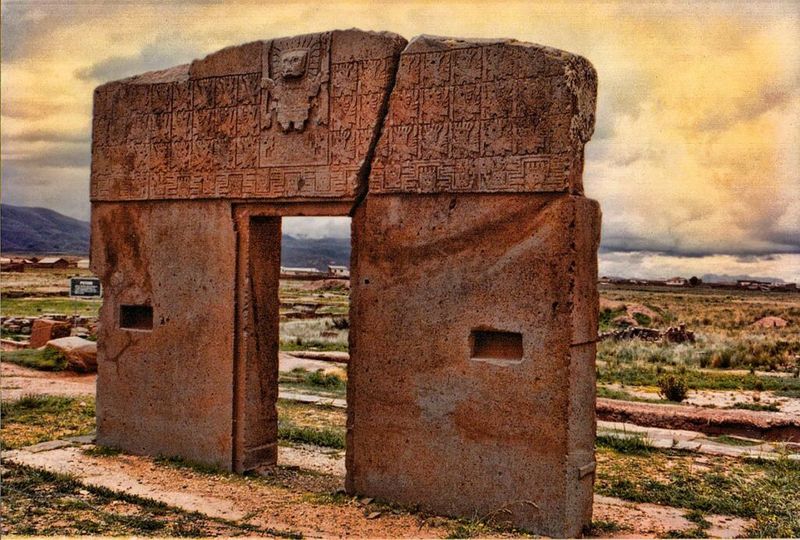
Tiwanaku, nestled near the shores of Lake Titicaca in Bolivia, is a testament to pre-Incan civilization’s ingenuity. This archaeological site, with its monumental stone structures, has puzzled historians for centuries.
How did these people, with limited technology, create such precise and massive edifices? The Gate of the Sun and the Akapana Pyramid stand as testaments to their architectural prowess.
Tiwanaku is a place where history’s enigmas beckon, inviting exploration of a civilization’s heights and mysteries.
Hagar Qim, Malta
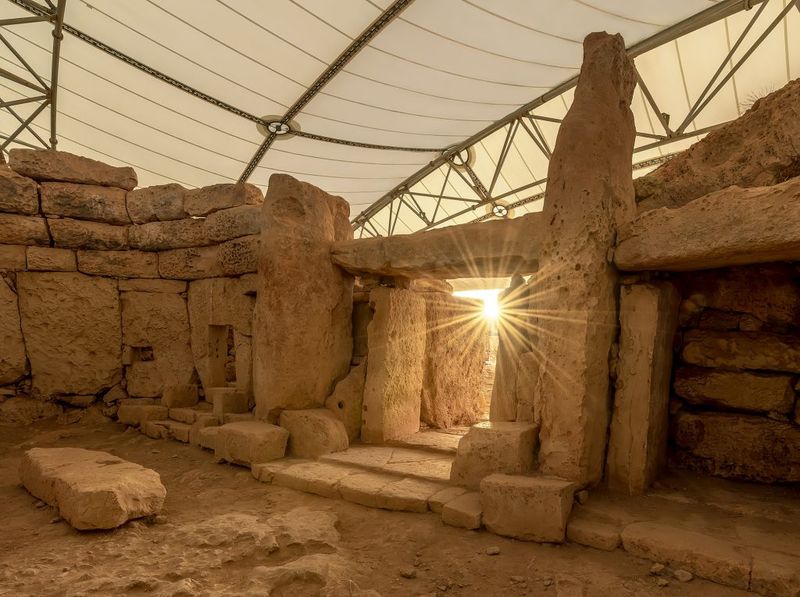
Hagar Qim, located on the island of Malta, is a megalithic temple complex dating back to 3600 BC. Its massive limestone slabs and intricate carvings suggest a site of worship and community gathering.
What rituals and ceremonies took place within these ancient walls? The temple’s alignment with solstices hints at astronomical significance.
Hagar Qim stands as a monument to Malta’s prehistoric legacy, where stones speak of humanity’s enduring quest for connection and meaning.
Newgrange, Ireland
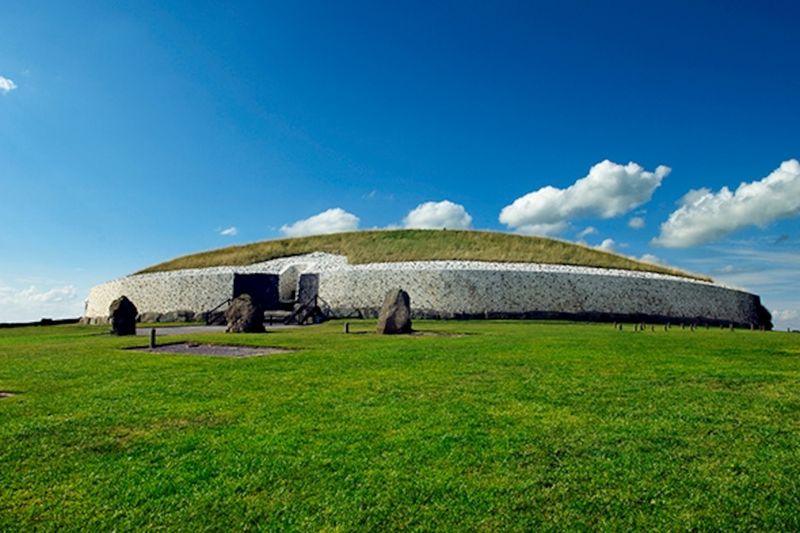
Newgrange, a passage tomb in Ireland, predates the pyramids and Stonehenge, standing as a marvel of Neolithic engineering. Its circular mound, with a long passage and chamber, aligns perfectly with the winter solstice sunrise.
What inspired this ancient feat? The tomb’s carvings and construction speak of a society deeply connected to cosmic cycles.
Newgrange is more than a burial site; it’s an astronomical observatory, where the dance of light and stone creates a timeless spectacle, inviting reflection.
Mesa Verde, USA
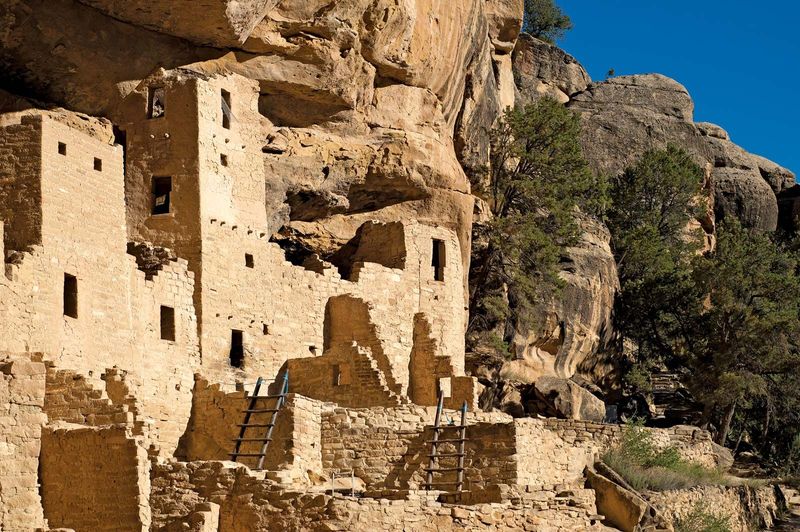
Mesa Verde, located in Colorado, USA, is home to some of the best-preserved cliff dwellings in North America. This UNESCO World Heritage site, built by the Ancestral Puebloans, offers a glimpse into a vibrant community that thrived over 700 years ago.
The intricate architecture, nestled within canyon alcoves, reflects a society adept at adapting to their environment. What stories do these stone walls hold?
Mesa Verde is not just an archaeological site; it’s a testament to human ingenuity and survival in harmony with nature.
Borobudur, Indonesia
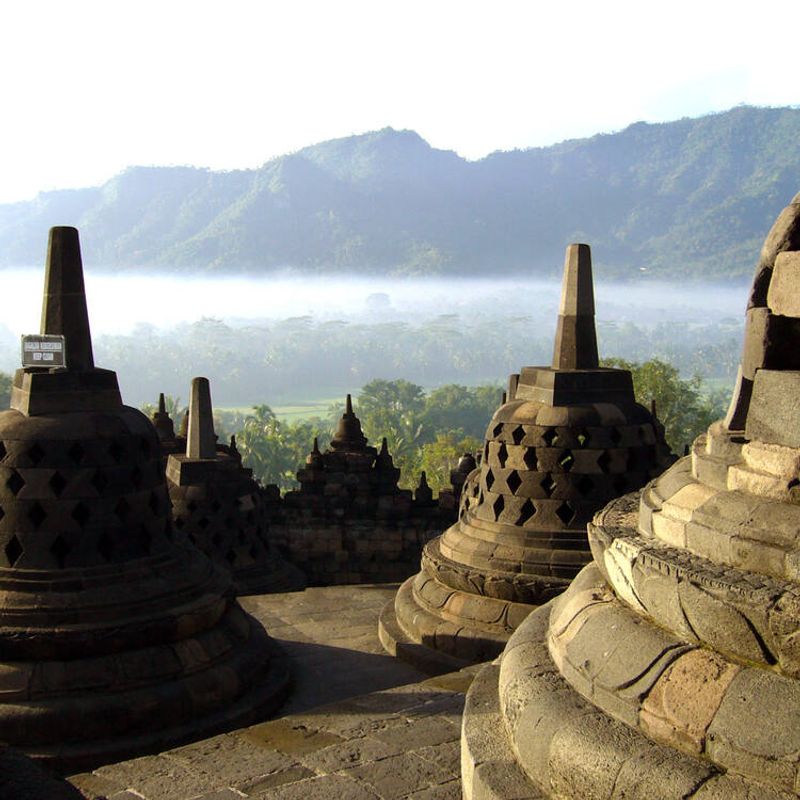
Borobudur, the world’s largest Buddhist temple, rises majestically from the jungles of Java, Indonesia. This 9th-century monument, adorned with intricate relief panels and stupas, is a masterpiece of religious architecture.
What stories do its carvings tell of enlightenment and spiritual journey? The temple’s design, reflecting the path to Nirvana, is a pilgrimage in stone.
Borobudur stands as a symbol of Indonesia’s rich cultural tapestry, where history and spirituality converge in a breathtaking panorama.
The Oracle of Dodona, Greece
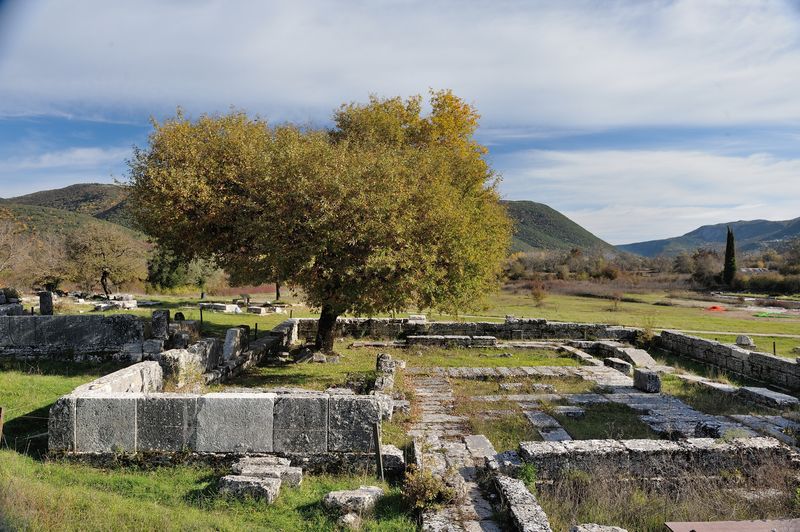
Nestled in a remote valley, the Oracle of Dodona is a testament to the mystical past of Greece. Unlike its more famous counterpart in Delphi, Dodona was the oldest Hellenic oracle, where priests interpreted the rustling leaves of a sacred oak tree.
Imagine the whispers of wisdom carried by the wind, guiding ancient Greeks to divine truths. This oracle’s significance was unparalleled, serving as a spiritual hub for those seeking guidance.
The remnants of the sanctuary may be modest, yet they echo with the profound reverence it once commanded. This site illustrates the spiritual connection between humans and nature.
Biskupin, Poland
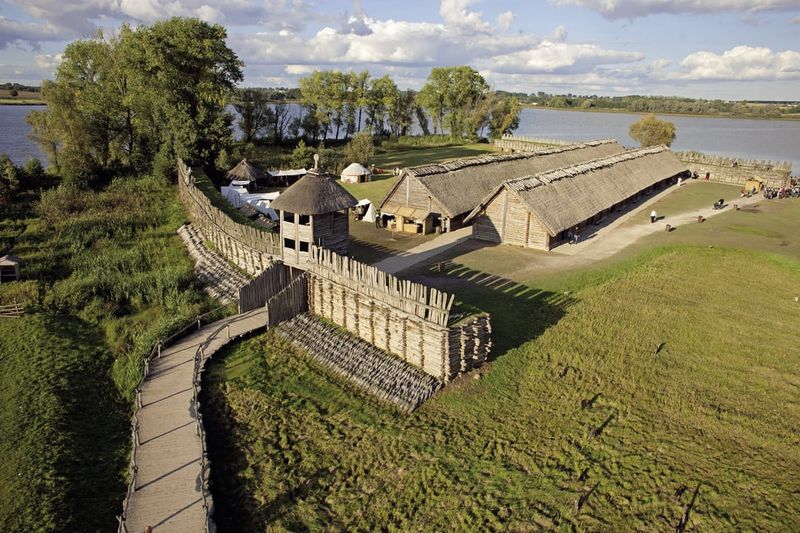
Biskupin stands as a remarkable snapshot of an Iron Age settlement in Poland. Discovered in the 1930s, its excavation unveiled a meticulously planned fortified village, dating back to the 8th century BCE.
The village’s wooden houses, streets, and defenses offer a window into the life of early European communities. Walking through its reconstructed pathways, one can almost hear the echoes of its industrious inhabitants.
The site is a fascinating glimpse into the strategic and communal aspects of prehistoric life, showcasing early advancements in urban planning and construction. Its preservation allows us to step back into a world long gone.

